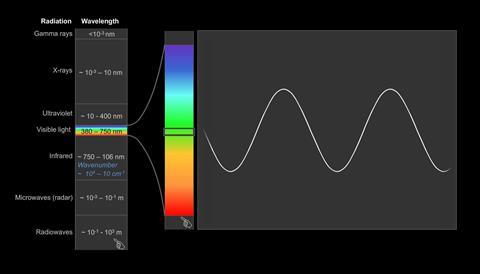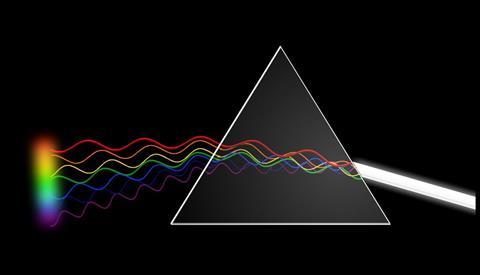Explain the principles of a range of spectroscopic techniques including infrared (IR), ultraviolet-visible (UV-vis) and nuclear magnetic resonance (NMR). Each technique has clear explanations and descriptions supported by animations (many of which are interactive) to aid your learning.
Spectroscopy is the study of the interaction of electromagnetic radiation in all its forms with matter.
The interaction might give rise to electronic excitations, (e.g. UV), molecular vibrations (e.g. IR) or nuclear spin orientations (e.g. NMR).
When a beam of white light strikes a triangular prism it is separated into its various components (ROYGBIV). This is known as a spectrum.
The optical system which allows production and viewing of the spectrum is called a spectroscope. There are many other forms of light which are not visible to the human eye and spectroscopy is extended to cover all these.
All Flash animations are available to download, they can be opened separately with Internet Explorer. Many add an extra level of detail which aids understanding and supports the on-page concepts.
Spectroscopy techniques:
- Infrared spectroscopy (IR)
- Nuclear magnetic resonance (NMR)
- Ultraviolet–visible spectroscopy (UV/vis)
Other analytical techniques:
Downloads
Electromagnetic radiation
Simulation | Flash, Size 21.7 kbTriangular prism diffraction
Simulation | Flash, Size 4.01 kb
Additional information
Further relevant background material and resources for both teachers and students is available in the DVD resources ‘Uncovering Chemical Secrets’ and ‘Uncovering Chemical Secrets II’ (produced by Peter Edwards and Peter Hollamby) which are available from The School of Chemistry, Cardiff University, Cardiff, CF10 3AT.
Both DVDs are designed specifically as a resource for GCE A-level.
The Royal Society of Chemistry will not be responsible for the content of such DVD resources and shall not be held liable for any claim or loss arising as a result of reliance or use of such DVD resources.




















2 readers' comments